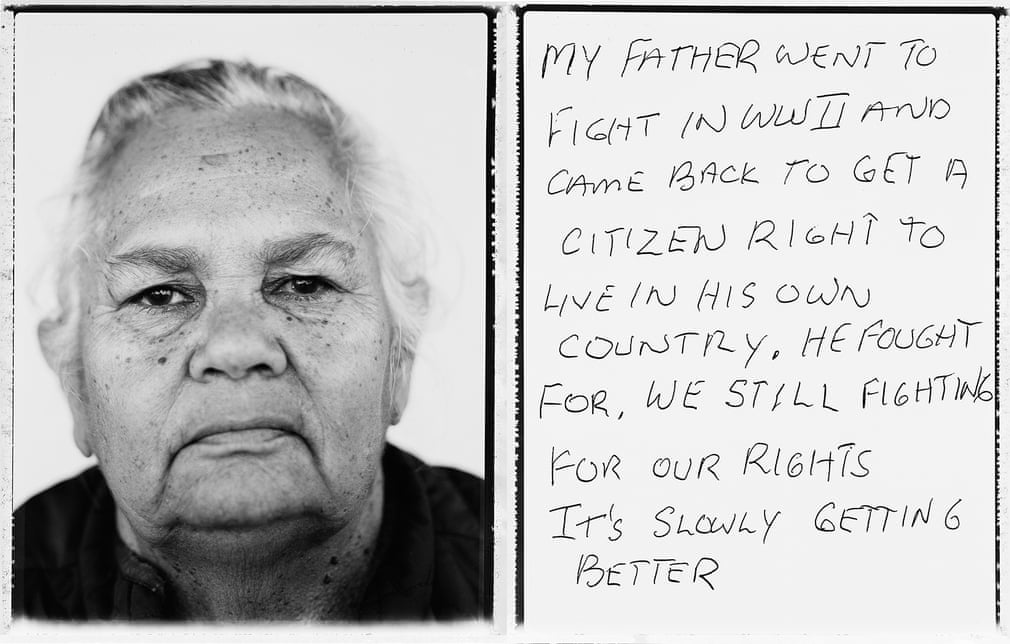
 Bad History: How Britain Colonised Australia
Bad History: How Britain Colonised Australia
We are encouraged to be proud of our nation, and most people are. But when the history we are taught glosses over the real story, we must question; what kind of foundation is this pride built upon?
As part of our #BadHistory feature, we will be laying down some real truths about what happened during British Colonialism.
It's time to face up to our history.
This month - how Britain invaded Australia.
Britain discovered Australia in the late 18th century, after 60,000 years of Aboriginal life. 60,000 years. Think about that. This society had found ways of surviving, living off the land, for all that time.
No industrial revolution, no slavery, no destruction and devastation necessary. These are the people who we should ask to teach us. Their culture is so valuable and we could learn so many important lessons, like how to look after our planet and be resourceful, preserving the world for generations to come to enjoy life as we are.
Yet, when the British colonising force arrived in Australia they went on to cause brutal suffering to the world's most ancient living culture.

1770 - The first white men landed on the east coast
Lieutenant James Cook claimed possession of the east coast of Australia for the British Crown
Cook saw the Aborigines living in small groups, how he assumed to be like backwards savages. They were subsequently classed as fauna, not even human.
In reality, more than 500 indigenous nations inhabited Australia. All unique communities who had been living harmoniously for tens of thousands of years.
WHY DID THE BRITISH WANT TO COLONISE?
"The new settlement was designed to alleviate overcrowding in British prisons, expand the Empire, assert Britain’s claim to the territory against other colonial powers, and establish a British base in the global South"
So the main reason for the atrocities committed? Power and money.
1788 - First fleet to begin the colony of New South Wales
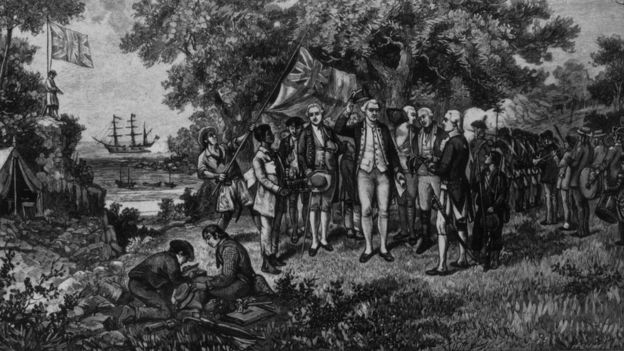
Captain Arthur Phillip and 1,500 convicts, crew, marines and civilians arrived at Sydney Cove with the impression of the Aborigines as inferior, firm in their minds.
Because the indigenous civilisations did not appear as advanced as the British, in terms of things like riding horses, permanent homes and wearing fancy clothing, the colonists believed they could treat the indigenous people how they pleased.
The British made no attempts to recognise humanity within these cultures.
The humanity that was clearly there in so many ways.
Ceremonies through dance were performed to the beat of skin drums and melodious singing told of the stories from ancient times
They had favourite dances, rituals, stories, ways of hunting and passed down through generations. Different groups had alliances and maintained trade between each other.

The people lived in harmony with their land, they harnessed the technology of fire to manage the land, and consciously encouraged new growth for the wildlife. They worked with the cycles in nature, were grateful for the food it provided, and certainly didn’t take advantage of the earth's resources.

They had ways of predicting the land, knowing the seasons by noticing simple things in nature, like swallows migrating, and the blossom of trees. These indigenous communities respected the ecosystem that they were a part of, unlike the British, who were completely abusive to the environment in their pursuit of power.
What followed can only be described as evil. Actions from the colonists involved direct and violent conflict towards the Aborigines, in many forms.
They were hunted down, and brutally murdered. This can be seen in the Massacres Map, a map which shows the extent of the slaughter to indigenous groups from British colonists.
The map includes details about the number of people killed at each site, which weapons were used, and were also responsible for the massacres affecting almost every Aboriginal tribe between 1788 and 1872.

Some massacres involved shootings, others involved forcing groups off cliffs, or falsely befriending them, only to give them poisoned food.
Those who weren’t murdered were imprisoned or enslaved. In Tasmania, “Black men were used for target practice, Black women were used as sex slaves, and Black babies were roasted”.
As well as the horrific violence inflicted on these innocent people simply because they were viewed as the inferior race, the British colonists also brought new diseases to communities, with a 50% fatality rate.
If Aboriginal people didn’t watch their friends and family brutally slaughtered, they likely lost them to small pox, measles and influenza - all illnesses that the indigenous land has been free of.
Smallpox had killed half of the Indigenous people in the Sydney region within 14 months of the arrival of the first fleet.
Indigenous girls and women, though viewed as less than human, endured brutal sexual abuse.The British colonists arrived, and saw these communities who they believed were so inferior they had to be eradicated, yet in the process they felt the need to gain pleasure through rape and sexual abuse.
Through this, further disease was spread “in epidemic proportions”.
The Aboriginals by no means were passive prisoners.
There was insurgencies, resistance and resilience from the Aboriginal people. Though they continually resisted terrible treatment and infringement of their rights to the land, the Australian Aboriginals endured massacre, mass disease, sexual and financial abuse and rapid loss of rich and important culture.
After Colonialism
1905 Aboriginal Act and 1901 - 1973 - various “white Australia” policies
The 1905 act extended the definition of Aboriginal to all mixed race children. Parents legal guardianship was removed and given to the Chief Protector of Aborigines along with powers to remove children from their parents, basically legalising kidnapping of Aboriginals alone within Australia.
This kidnapping occurred on mass. Children were taken and brought up in white families, in order to breed out the Aboriginal colour and culture.
They were taught to be ashamed of their heritage, causing further loss of indigenous culture and language. The children were sometimes also psychologically, physically and sexually abused in their new environments. They are called the Stolen Generation.
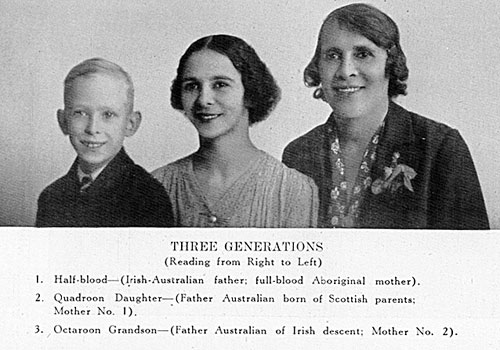
Cuts to the budget of the Aborigines Department, partly resulting from the 1905 act, meant the department was merged in 1909 to form the Department of Aborigines and Fisheries. So the Aboriginals not only now managed by the government, but they were grouped together with fish.
The institutionalised racism created from these political events amounted to Aboriginal "concentration camps" in which the Aboriginal people were to be confined until their race became extinct. They were captive from 1881 to 1940.

‘White Australia’ policies were developed with the aim to literally keep Australia white, effectively banning people of non-European descent from immigrating to Australia.
Because of this, little effort was made to alter attitudes towards Aboriginal Australians because it was believed that they simply would be bred into the European community, and the race would disappear.
If Aborigine people could not ‘die out’ naturally then they had to be made accustomed to the white way of life. The Stolen Generation were educated with white Australians and not taught of their Aboriginal heritage, in order to be 'civilised' into white society.
The aim is clear: Genocide
Through the policies, and this attitude towards the Aboriginals, cultural acceptance was discouraged, and hand in hand with this, racism was widely fostered.
Only in 1962 were Aboriginals given the right to vote in elections, and only in 1967 did a referendum allow them to be counted among all Australians in the national census. Before this, some Aboriginals were considered 'fauna' in the eyes of the law.
The poor treatment and views of Aboriginal people as an inferior race, though reduced in extremism, has continued for years, with a now long rooted cultural bias. To this day there are still negative attitudes, STILL institutionalised racism, and no treaty agreement signed with the two EQUAL groups of Australia.
This history is potentially one of the reasons Australia has racist views of immigrants and Aboriginal people today.
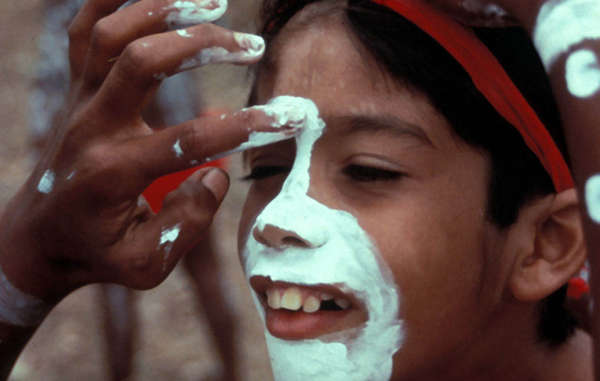
There are 700,000 Australian Aboriginals today.
So much of the their culture was lost because of the British. The treatment and exclusion they have experienced for years since is shameful, but certainly now, the Aboriginals should have full equality in rights, and fair attitudes towards them.
Sadly, this is STILL not the case, as from the first day the British set foot on Australian soil to now, the Aboriginal people have not been given a treaty.
In the 18th century this was because they were not viewed highly enough to expect one, and in recent years it has been because "a country does not make a treaty with itself".
Yet a treaty is necessary to enable fair negotiations with governments and the Aboriginal people, and to allow them feel included and empowered. It provides a framework for how negotiations are held on indigenous issues like welfare, employment, education, health and land ownership.
A treaty of fair negotiations would allow Aboriginals to finally define their identity and try and regain some of the traditional culture which was so brutally destroyed in British colonialism, and is not yet safe, like the current threatened destruction of a sacred butterfly cave.
How Aboriginies are living today
In Australia now, suicidality behaviours (such as self harm) are at rates of ten times those experienced by the non-Indigenous population.
Indigenous imprisonment rates at 2,253 people in 100,000 compared to 146 in 100,000 in the non-Indigenous population
59% of people in Juvenile Detention Centres were indigenous, despite them only making up 3% of the entire population.
There also exists severe housing problems including overcrowding, more infectious disease, more chronic disease, and a lifespan of 10 years lower than the non-Indigenous population.
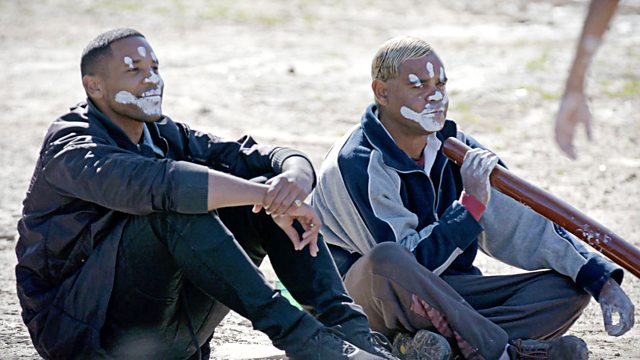
Regge Yates recently created a documentary on Aboriginal life today. When he went out to visit these people, he found the indigenous people still suffering extreme social deprivation and inequality.
Yet, even in an attempt to document the aboriginal perspective, seeing first hand the injustice they face, the media seemed against them:
The BBC have come under scrutiny and have since apologised for the misportrayal of the indigenous people getting drunk at a wake. This is proof of underlying racist attitudes towards Aboriginals, and the true lack of people standing up for them.

Now that Guestlist have presented this raw, unadulterated, Bad History, from the side of brutality, we hope to start a conversation.
British colonialism was atrocious and unfortunately it cannot be kept secretly in the past, when effects are still being seen today. The narrative of immigration today is greatly affected by this history. Attitudes towards different groups were forged in these colonial times. The racism still vastly experienced today was shaped from colonial roots.
Not enough is being done to push the government to a treaty. We must stand up for the rights of Aboriginals. We must rid Australia of its deep rooted racism. We want to see Australia united.

